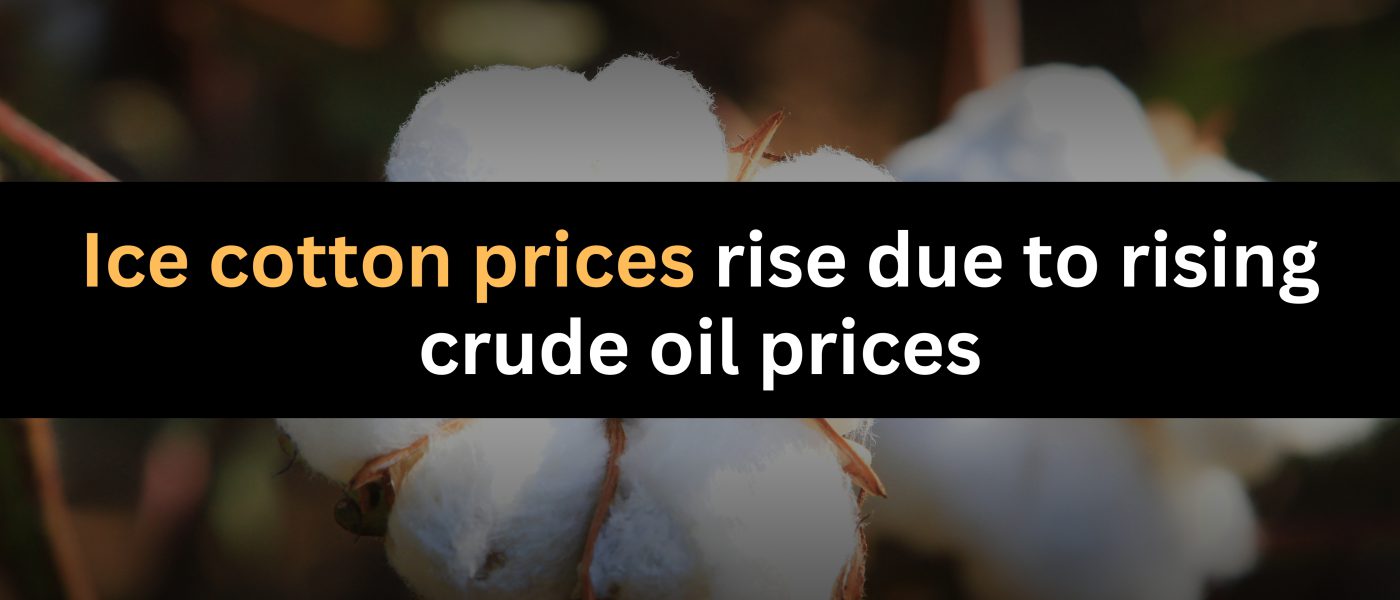While rising crude oil prices continue to pressure ICE cotton future contract prices, the stronger US dollar and average export levels likely diminish the effects. The price increase is gradual, as the market also considered favorable weather conditions and limited buying activity. This may also impact fabric-selling websites and suppliers of cotton fabric online in India.
Let’s break down the factors that influence ICE cotton prices:
- Rising Crude Oil Price: High crude oil prices can make synthetic fibers more expensive as they are produced from petroleum. This can increase the demand for natural fibers like cotton, pushing their price up.
- Favorable Weather Conditions: Cotton crops thrive in good weather conditions, which can increase supply, and this can prevent ICE cotton prices from rising too quickly despite the high crude prices.
- Stronger US Dollars: The most common export currency is the US Dollar. A stronger US dollar makes ICE cotton more expensive for foreign buyers. This can reduce the demand for US-based cotton and increase the demand for Indian suppliers.
What is ICE Cotton?
ICE Cotton is cotton futures contracts traded on the Intercontinental Exchange (ICE), which is based in the USA and is one of the top marketplaces for buying and selling cotton and other agricultural commodities. Cotton futures are standardized contracts to buy and sell a specific amount of cotton at an already fixed cost in the future. Manufacturers, producers, and investors use these contracts to hedge against price volatility and speculate on price fluctuations. By trading ICE cotton, manufacturers, farmers, and suppliers can access global textile marketplaces, ensuring efficient price discovery for cotton and providing liquidity. ICE
Cotton has 3 key aspects:
- Speculation: Traders and investors trade ICE cotton futures contracts globally to gain profit from expected changes in cotton prices.
- Hedging: Farmers and manufacturers use futures contracts to lock the price at which they sell and buy their crops, protecting themselves from the risks of falling prices before harvest season.
- Standardization: The contracts are standardized for quality, price, quantity, and delivery date, ensuring a transparent, secure, and highly regulated environment for woven and non-woven material suppliers.
Statistics and More…
The trade analysts said that the price for the US Cotton July Contract increased by .58 cents, or 58 points, to 76.24 cents per pound (1 point is equal to 0.01 cents). The price of the futures contracts increased by 1.68 cents, or 161 points, over the last two trading sessions. The US Cotton December contract settled at 75.19 cents, with the price increasing by .66 points or 66 cents, in the third week of May, appreciating by 101 points over the same period.
On May 15 th , the dollar index closed with positive momentum. This made cotton purchases expensive for international buyers, negatively impacting the ICE cotton prices.
The trading volume was a bit low on May 16 th , with just 38,587 contracts traded compared to the 46,815 contracts traded in the previous session. However, it also saw the largest daily increase in over a month. Open interest increased again—eight days in a row now, adding 1797 contracts and raising the total to 223,068 contracts. Certified stocks also experienced a surge, quite surprisingly, increasing the number by 13,135 bales and the total to 182,870 bales. This essentially reversed the declining rate that was observed over the last 15 days.
China remains the top customer for ICE cotton in the 2023 -2024 session, with 4,771,900 bales signed and 3,975,900 bales shipped. Total commitments for the 2023-24 season amounted to 12,110,300 bales, with 8,813,300 bales already shipped.
For more Textile news and insights, follow TEXchange Global and subscribe to TEXBulletin. For a free subscription, WhatsApp “TEX Bulletin” to +91 98-1040-1045. TEXchange Global is one of the world’s leading textile trading portals, and it is open to all in the global market. Whether you are an online fabric store in India or a cotton buyer from China, you will find the best trading options and deals from unsaturated markets worldwide.




